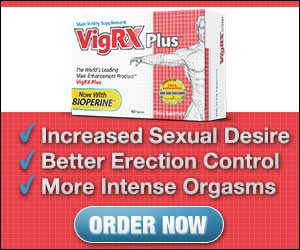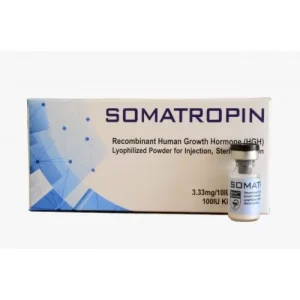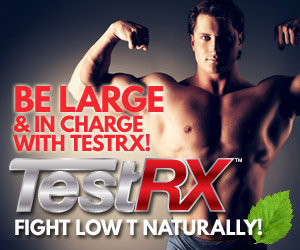Bodybuilding
Muscle Disorders: Diagnosis, Treatment and Coping Routine
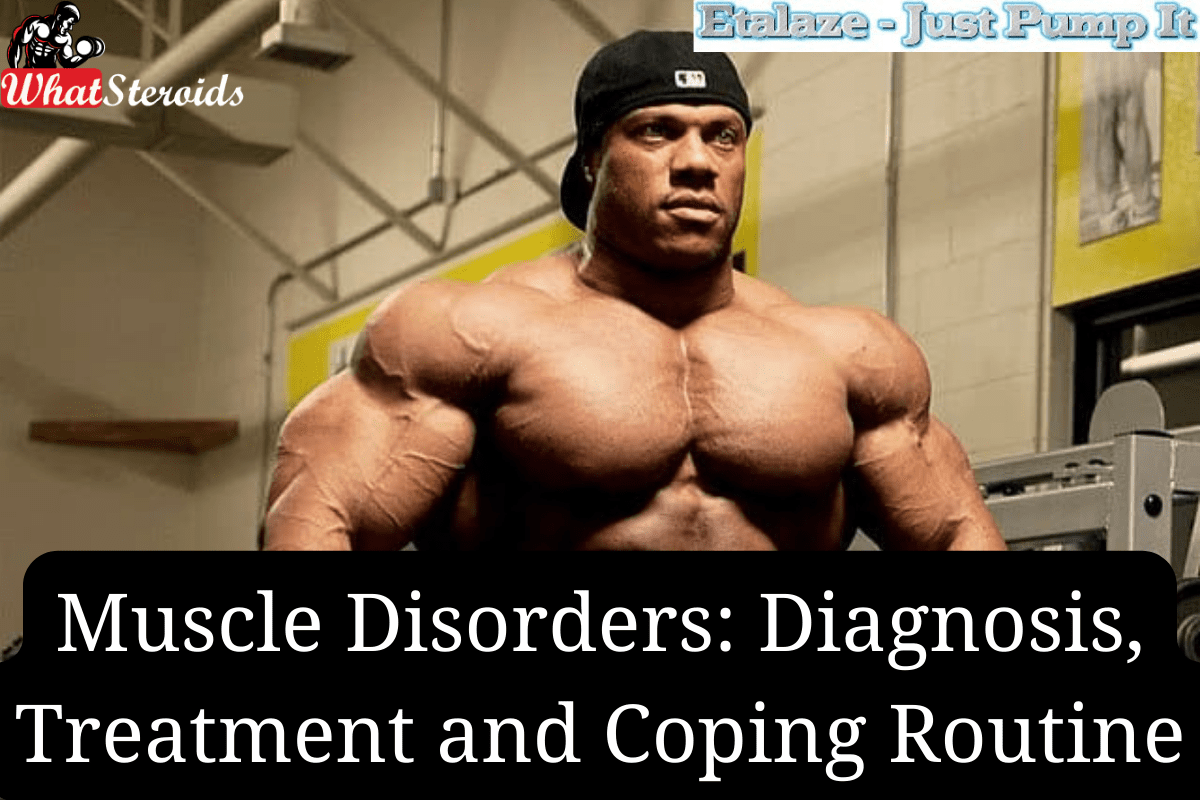
Bodybuilders are susceptible to a range of muscle disorders and conditions due to the intense physical demands they place on their muscles and the use of dietary supplements and performance-enhancing substances. Here are some muscle disorders that can affect you as a bodybuilder. We have also discussed muscle care routines to help preserve your muscles.
Muscle Strains
Muscle strains, also known as pulled muscles, can occur when a muscle is stretched or torn due to overuse, improper form, or lifting weights too heavy. Bodybuilders often push their muscles to the limit, increasing the risk of strains.
Muscle Tears
Muscle tears are more severe than strains involving muscle fibers' complete or partial rupture. This can result from lifting extremely heavy weights or performing exercises with poor form.
Tendonitis
Tendonitis is the inflammation of tendons, which connect muscles to bones. Repetitive stress from weightlifting can lead to tendonitis, causing pain and discomfort, especially in areas like the shoulders, elbows (tennis elbow), and knees (patellar tendonitis).
Rotator Cuff Injuries
The rotator cuff is a group of muscles and tendons that stabilize the shoulder joint. Overhead lifting and repetitive shoulder exercises in bodybuilding can lead to rotator cuff injuries, such as tears or inflammation.
Muscle Imbalances
Focusing too much on certain muscle groups while neglecting others can result in muscle imbalances. These imbalances can lead to improper joint mechanics and increase the risk of injuries.
Compartment Syndrome
Intense muscle swelling during and after workouts can lead to compartment syndrome, where pressure within a muscle compartment increases significantly. This can impede blood flow and nerve function, causing severe pain and potential muscle damage.
Rhabdomyolysis
Extreme exertion, especially in cases of overtraining, can lead to rhabdomyolysis, a condition where muscle tissue breaks down rapidly, releasing harmful substances into the bloodstream. Rhabdomyolysis can lead to kidney damage and other serious complications.
Steroid-Related Muscle Disorders
Some bodybuilders use anabolic steroids to enhance muscle growth, which can adversely affect muscles. This may include muscle atrophy (wasting), muscle weakness, and increased muscle tears or strain risk.
Overtraining Syndrome
Bodybuilders who overtrain without allowing sufficient rest and recovery can experience overtraining syndrome. Symptoms may include chronic fatigue, muscle soreness, and a decline in performance.
Muscle Dysmorphia
While not a physical muscle disorder, muscle dysmorphia is a psychological condition that affects some bodybuilders. It involves an obsessive preoccupation with muscle size and a distorted body image, which can lead to unhealthy behaviors and negative mental health outcomes.
Diagnosis of Muscle Disorders
Doctors can detect muscle disorders through clinical assessments, medical history, physical examinations, and diagnostic tests. Here's an overview of how muscle disorders are typically detected:
-
Medical History
The doctor will begin by taking a detailed medical history, which includes asking questions about the patient's symptoms, when they started, and any relevant family medical history. Information about medications, previous injuries, and exercise habits may also be important.
-
Physical Examination
A thorough physical examination is crucial. The doctor will examine the affected muscles and surrounding areas for signs of muscle weakness, atrophy (muscle wasting), muscle spasms, twitching, or tenderness. They will also assess joint mobility and overall muscle tone.
-
Neurological Examination
Since the nervous system controls muscles, a neurological examination may be performed to assess reflexes, sensation, coordination, and muscle strength. This can help determine if the issue is primarily muscular or has a neurological component.
-
Laboratory Tests
Blood Tests: Blood tests can help identify specific markers associated with muscle disorders, such as creatine kinase (CK) levels, which can be elevated in conditions like muscular dystrophy or rhabdomyolysis.
Electrolyte Levels: Abnormalities in electrolyte levels, such as potassium or calcium, can contribute to muscle problems and may be checked via blood tests.
-
Imaging Studies
MRI (Magnetic Resonance Imaging): MRI scans can provide detailed images of muscles and surrounding structures, helping to identify muscle inflammation, injuries, or tumors.
CT (Computed Tomography): CT scans may assess muscle and soft tissue conditions in certain cases.
-
Electromyography (EMG)
EMG involves the insertion of fine needles into the muscles to measure electrical activity. It can help diagnose neuromuscular disorders and determine the health of muscles and the nerves controlling them.
-
Nerve Conduction Studies (NCS)
NCS assesses how well the nerves can transmit electrical signals to the muscles. It can help identify nerve-related causes of muscle problems.
-
Muscle Biopsy
In some cases, a small sample of muscle tissue may be extracted and analyzed under a microscope to identify abnormalities in muscle structure and function. This is often done for conditions like muscular dystrophy.
-
Genetic Testing
Genetic tests can identify genetic mutations associated with inherited muscle disorders like muscular dystrophy or myotonic dystrophy.
-
Specialized Tests
Additional specialized tests may be conducted depending on the suspected muscle disorder. For example, a skin biopsy might be performed in cases of dermatomyositis, or a lumbar puncture (spinal tap) may be done if there are suspicions of inflammatory muscle disorders involving the central nervous system.
The diagnostic process can vary depending on the symptoms and suspected underlying condition. Doctors often use a combination of these tools to arrive at a precise diagnosis. Once a diagnosis is made, the appropriate treatment plan can be developed to manage the muscle disorder and alleviate symptoms.
Treatment/Management
The treatment of muscle disorders in bodybuilders depends on the specific condition and its severity. It's crucial to consult with a healthcare professional or a sports medicine specialist for a proper diagnosis and tailored treatment plan. Here are some treatment procedures for common muscle disorders that may affect bodybuilders:
Related Article: Top 15 Bulking Supplements Today
-
Rest and Recovery:
- In many cases, muscle disorders require a period of rest to allow the affected muscles to heal. Avoiding strenuous exercise is essential to prevent further damage.
-
Medications:
- Non-steroidal anti-inflammatory drugs (NSAIDs), such as ibuprofen, may be prescribed to reduce pain and inflammation associated with muscle strains, tendonitis, or overuse injuries.
- For certain conditions, such as autoimmune muscle disorders, corticosteroids or other immunosuppressive medications may be necessary to manage inflammation and symptoms.
- Physical Therapy:
- Physical therapy can be beneficial for muscle disorders. A physical therapist can create a customized exercise program to improve flexibility, strength, and range of motion while minimizing the risk of reinjury.
-
Heat and Cold Therapy:
- Ice packs (cold therapy) can help reduce inflammation and relieve pain in the acute phase of some muscle injuries.
- Heat therapy (e.g., warm compresses or heating pads) may relax and soothe muscles, particularly for muscle spasms or chronic conditions.
-
Massage and Manual Therapy:
- Massage therapy and techniques like myofascial release can help alleviate muscle tension, improve blood flow, and reduce muscle soreness.
-
Bracing or Splinting:
- During healing, orthopedic braces or splints may be prescribed to support and immobilize injured muscles or joints.
-
Activity Modification:
- Adjusting your exercise routine to avoid aggravating the affected muscles is crucial. Your healthcare provider or physical therapist can guide safe exercise modifications.
-
Nutrition and Hydration:
- Maintaining a well-balanced diet rich in nutrients, particularly protein, can support muscle repair and recovery.
- Staying properly hydrated helps prevent muscle cramps and aids in overall recovery.
- Injections:
- Local anesthetics or corticosteroid injections may be recommended for pain relief and muscle relaxation in certain conditions like myofascial pain syndrome or trigger points.
- Surgery (in severe cases):
- Surgical intervention may be necessary for muscle disorders that involve significant tears, ruptures, or compartment syndrome.
- Psychological Support:
- For conditions like muscle dysmorphia or other mental health issues related to bodybuilding, therapy, and counseling can be valuable for addressing psychological factors contributing to the disorder.
- Education and Prevention:
- Learning about proper training techniques, warm-up and cool-down routines, and injury prevention strategies can help prevent future muscle disorders.
Must Read: All Bodybuilding Categories Explained
Muscle Care Routine to Follow
A comprehensive muscle care routine is crucial for bodybuilders to optimize muscle growth, prevent injuries, and promote overall health and well-being. Here's a structured muscle care routine for bodybuilders:
Warm-Up and Stretching
Begin each workout with a proper warm-up to increase blood flow and prepare your muscles for exercise. This can include light cardio, dynamic stretching, and mobility exercises.
After your workout, perform static stretches for each major muscle group to improve flexibility and prevent post-workout muscle tightness.
Proper Nutrition
Maintain a balanced diet rich in lean protein, complex carbohydrates, healthy fats, and various fruits and vegetables.
Ensure you're getting enough protein to support muscle repair and growth.
Stay hydrated by drinking plenty of water to help prevent muscle cramps and dehydration.
Supplementation (if desired)
Consult with a healthcare professional or sports nutritionist to determine whether supplements are appropriate for your goals. Common supplements for bodybuilders include protein powder, creatine, branched-chain amino acids (BCAAs), and multivitamins.
Proper Technique
Focus on proper exercise form and technique to reduce the risk of injuries. Consider working with a qualified personal trainer or coach, especially if you're new to lifting.
Progressive Overload
Gradually increase your workout intensity, weight, or resistance to stimulate muscle growth. Avoid lifting excessively heavy weights too soon, which can lead to injuries.
Adequate Rest and Recovery
Ensure you get enough sleep (7-9 hours per night) to support muscle recovery and overall health.
Allow muscle groups to rest for at least 48 hours between intense workouts targeting the same area.
Consider incorporating active recovery days, where you engage in low-intensity activities like walking or swimming.
Foam Rolling and Self-Massage
Use foam rollers, massage sticks, or massage balls to target areas of muscle tightness and knots. This can help improve flexibility and reduce muscle soreness.
Ice Baths and Contrast Baths
Some athletes relieve muscle soreness by alternating between hot and cold baths or showers. This method is known as contrast therapy.
Hygiene and Injury Prevention
Maintain good hygiene to prevent skin infections, especially in gyms and other shared workout spaces.
Use proper protective gear, such as weightlifting belts and wrist wraps, when necessary to support your muscles and joints.
Regular Check-Ups
Periodically consult with a sports medicine specialist or physical therapist to assess your overall musculoskeletal health and address any emerging issues.
Stress Management
High stress levels can affect muscle recovery and overall health. Incorporate stress-reduction techniques like meditation, yoga, or deep breathing exercises into your routine.
Listen to Your Body
Pay attention to any signs of pain, discomfort, or fatigue. It's essential to differentiate between normal muscle soreness and potential injuries. If you suspect an injury, seek professional medical advice.
Muscle Disorders Could Be Connected to Diet
Bodybuilders should focus on a balanced and nutritious diet to support their muscle growth and overall health. While there aren't specific foods that bodybuilders must completely avoid to prevent muscle disorders, there are certain foods and dietary practices they should be cautious about or limit to maintain optimal health and performance. Here are some examples:
Excessive Processed Foods
Highly processed foods, such as sugary snacks, fast food, and sugary drinks, can lead to weight gain, inflammation, and insulin resistance. These factors can negatively impact muscle health over time.
Trans Fats
Trans fats, often found in fried foods and many commercial baked goods, can contribute to inflammation and increase the risk of heart disease, which may hinder muscle function.
Excessive Sugars
Consuming excessive added sugars can lead to weight gain, insulin spikes, and inflammation, negatively affecting muscle health. Sugary foods and beverages should be consumed in moderation.
Alcohol
Excessive alcohol consumption can interfere with muscle protein synthesis and recovery. It can also dehydrate the body, potentially affecting workout performance.
Too Much Sodium
A diet high in sodium can lead to water retention and increased blood pressure, which may not directly affect muscle disorders but can negatively impact overall health.
Inadequate Protein Intake
While not a food to avoid, bodybuilders must consume enough protein to support muscle repair and growth. A lack of protein can hinder muscle development.
Low-Fiber Foods
A diet low in fiber can lead to digestive issues, such as constipation, which can be uncomfortable for bodybuilders. Fiber is also important for overall health and nutrient absorption.
High Caffeine Intake
While moderate caffeine consumption can boost performance, excessive intake can lead to anxiety, sleep disturbances, and increased heart rate, which may negatively affect recovery.
Skipping Meals
Consistently missing meals can lead to inadequate nutrient intake, affecting muscle recovery and overall health.
Fad Diets
Extreme diets severely restricting certain food groups can lead to nutrient deficiencies and negatively impact muscle health. It's important to follow a balanced and sustainable nutrition plan.
Bodybuilders should prioritize a diet rich in lean protein, complex carbohydrates, healthy fats, fruits, vegetables, and plenty of water to support muscle growth and overall health. They should also monitor their nutritional needs based on their goals and consult a registered dietitian or nutritionist for personalized guidance. Proper supplementation and regular exercise are crucial components of a successful bodybuilding regimen.
Overall
Bodybuilders must prioritize proper training techniques, adequate rest and recovery, and nutrition to reduce the risk of these muscle disorders. Additionally, consulting with a healthcare professional or sports medicine specialist can help prevent and manage muscle-related issues in bodybuilding. Building muscle takes time, and caring for your muscles is as important as challenging them during workouts. Always prioritize safety and long-term health in your muscle care routine.
Also Read: What Are The Stages of Topical Steroids Withdrawal?
Bodybuilding
Understanding Trenbolone-Induced Cough (“Tren Cough”)
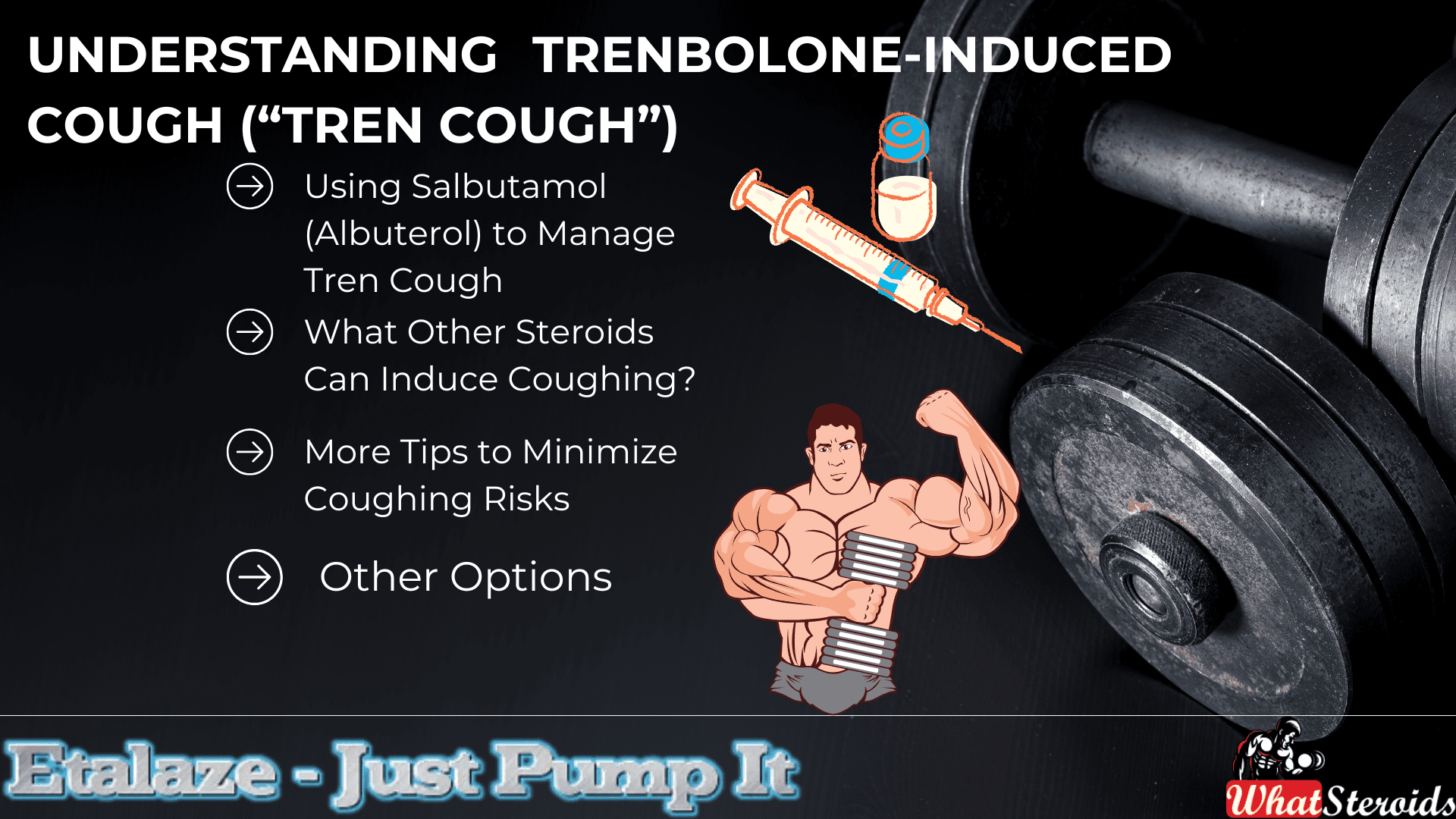
Trenbolone, a potent anabolic steroid, can sometimes cause “tren cough”—a sudden and intense coughing episode shortly after injection. Although not exclusive to Trenbolone, it is more commonly associated with this substance due to its highly irritant nature.
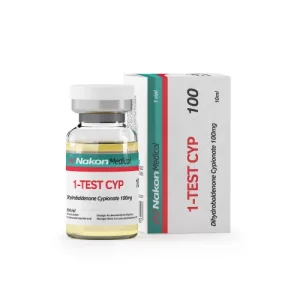 Click Here To Buy 1-Test Cyp 100 by Nakon Medical
Click Here To Buy 1-Test Cyp 100 by Nakon Medical
Mechanisms Behind Tren Cough
Solvent and Carrier Irritation
Trenbolone formulations often include volatile solvents like benzyl alcohol or benzyl benzoate, which may irritate lung tissues when absorbed quickly into systemic circulation.
Prostaglandin Release
Trenbolone promotes increased production of prostaglandins, particularly PGF2α. This compound triggers contraction in the smooth muscles of the lungs, leading to bronchoconstriction and coughing.
Micro-Oil Embolism
Tiny oil droplets from an injection can reach capillaries and travel to the lungs, causing mild embolic reactions that lead to temporary oxygen deprivation and coughing.
Histamine and Mast Cell Activation
For some individuals, Trenbolone triggers histamine release and mast cell activation, mimicking an allergic response and causing bronchospasms and cough reflexes.
Related Article: Best Syringes for Steroid Injection on Amazon
Using Salbutamol (Albuterol) to Manage Tren Cough
- Salbutamol, a widely-used β2-adrenergic receptor agonist, can alleviate tren cough symptoms by:
- Relaxing bronchial muscles, easing spasms that cause coughing.
- Inhibiting prostaglandin effects, reducing bronchoconstriction associated with PGF2α.
- Opening airways, preventing severe respiratory restrictions in susceptible individuals.
Application Methods
Inhaler (Optimal)
Take 1–2 puffs of salbutamol (100–200 mcg) 5–10 minutes before a Trenbolone injection. If coughing occurs afterward, additional puffs can swiftly resolve the issue.
Oral Tablets (Moderate)
Consuming 2–4 mg tablets 30–60 minutes before injection offers slower, longer-lasting relief but may be less effective than inhalation methods.
Nebulizer (Severe Cases)
For individuals with frequent episodes, nebulized doses of 2.5 mg salbutamol can provide substantial relief.
Preventive Measures to Reduce Tren Cough Risk
- Inject slowly to minimize systemic absorption and irritant effects.
- Split doses to lower reaction severity with smaller quantities.
- Opt for ventrogluteal injection sites, which have fewer blood vessels, reducing oil embolism risk.
- Choose lower-concentration solutions to lessen irritation, as higher concentrations (e.g., Tren Ace 200 mg/ml) are more likely to provoke reactions.
What Other Steroids Can Induce Coughing?
Here's a curated list of peptides, SARMs, and PEDs that may potentially cause coughing or respiratory irritation in bodybuilders and fitness enthusiasts:
Peptides
IGF-1 LR3 (Insulin-like Growth Factor): Known for its anabolic effects, IGF-1 LR3 can occasionally cause mild respiratory irritation due to systemic absorption.
TB-500 (Thymosin Beta-4): While rare, improper injection techniques or high doses may lead to transient coughing episodes.
GHRP-6 (Growth Hormone-Releasing Peptide): This peptide can stimulate histamine release, potentially leading to bronchospasms and coughing.
SARMs (Selective Androgen Receptor Modulators)
RAD-140: (Testolone) Some users report throat irritation or coughing, often attributed to solvents used in liquid formulations.
YK-11: Known for its myostatin-inhibiting properties, YK-11 may cause mild respiratory discomfort in sensitive individuals.
LGD-4033 (Ligandrol): Though uncommon, some users experience coughing due to carrier solvents or allergic-like reactions.
PEDs (Performance-Enhancing Drugs)
Boldenone Undecylenate (Equipoise): This injectable steroid can cause “Equipoise cough,” similar to tren cough, due to oil embolism or irritant solvents.
Testosterone Suspension: The water-based formulation may lead to coughing episodes if injected improperly or absorbed rapidly.
Nandrolone Decanoate (Deca-Durabolin): While less common, coughing can occur due to histamine release or systemic irritation.
More Tips to Minimize Coughing Risks
- Use proper injection techniques to avoid embolic reactions.
- Opt for lower-concentration solutions to reduce irritant effects.
- Consider antihistamines or bronchodilators for individuals prone to respiratory sensitivity.
Read More: Joint Stiffness: How to Manage It While on AAS
Are There Alternatives to Cough-inducing Steroids?
Here are some alternatives to cough-inducing steroids that can provide similar anabolic effects while minimizing respiratory irritation:
Peptides
IGF-1 LR3 (Insulin-like Growth Factor)
Promotes muscle growth and recovery without the irritant properties of certain steroids.
TB-500 (Thymosin Beta-4)
Enhances tissue repair and reduces inflammation, making it a safer option for recovery.
BPC-157 (Body Protection Compound)
Known for its healing properties, it supports muscle repair and joint health.
SARMs (Selective Androgen Receptor Modulators)
RAD-140 (Testolone)
Provides significant muscle-building effects with fewer systemic side effects compared to traditional steroids.
LGD-4033 (Ligandrol)
Boosts lean muscle mass and strength without the risk of respiratory irritation.
MK-677 (Ibutamoren)
Stimulates growth hormone release, aiding in muscle growth and recovery.
Natural Alternatives
Turkesterone
A plant-based ecdysteroid that supports muscle protein synthesis and recovery.
Ecdysterone
Another natural compound that mimics anabolic effects without the harsh side effects.
Creatine Monohydrate
Enhances strength and muscle mass through improved energy production during workouts.
Other Options
Human Growth Hormone (HGH)
Promotes muscle growth and fat loss, though it requires careful monitoring due to potential side effects.
Testosterone Boosters
Natural supplements like D-Aspartic Acid or Tribulus Terrestris can help optimize testosterone levels for muscle growth.
SARMs Alternatives
Legal and safer versions of SARMs are available, offering similar benefits without the risks associated with traditional SARMs.
Overall
We have explored the phenomenon of "tren cough," a sudden, intense coughing episode often caused by Trenbolone injections due to factors like solvent irritation, prostaglandin release, micro-oil embolism, or histamine activation. Preventive measures such as using salbutamol (via inhaler, oral tablets, or nebulizer), injecting slowly, splitting doses, and opting for lower-concentration solutions were highlighted.
Additionally, alternative compounds to tren cough-inducing steroids were discussed, including peptides like IGF-1 LR3 and TB-500, SARMs such as RAD-140 and LGD-4033, and natural options like Turkesterone, ecdysterone, and creatine. These alternatives provide anabolic effects while minimizing respiratory side effects. The conversation also underscored the importance of proper injection techniques and thoughtful compound selection to reduce risks.
Bodybuilding
Mastering Bodybuilding in 2025: Top Fitness Tips for Success
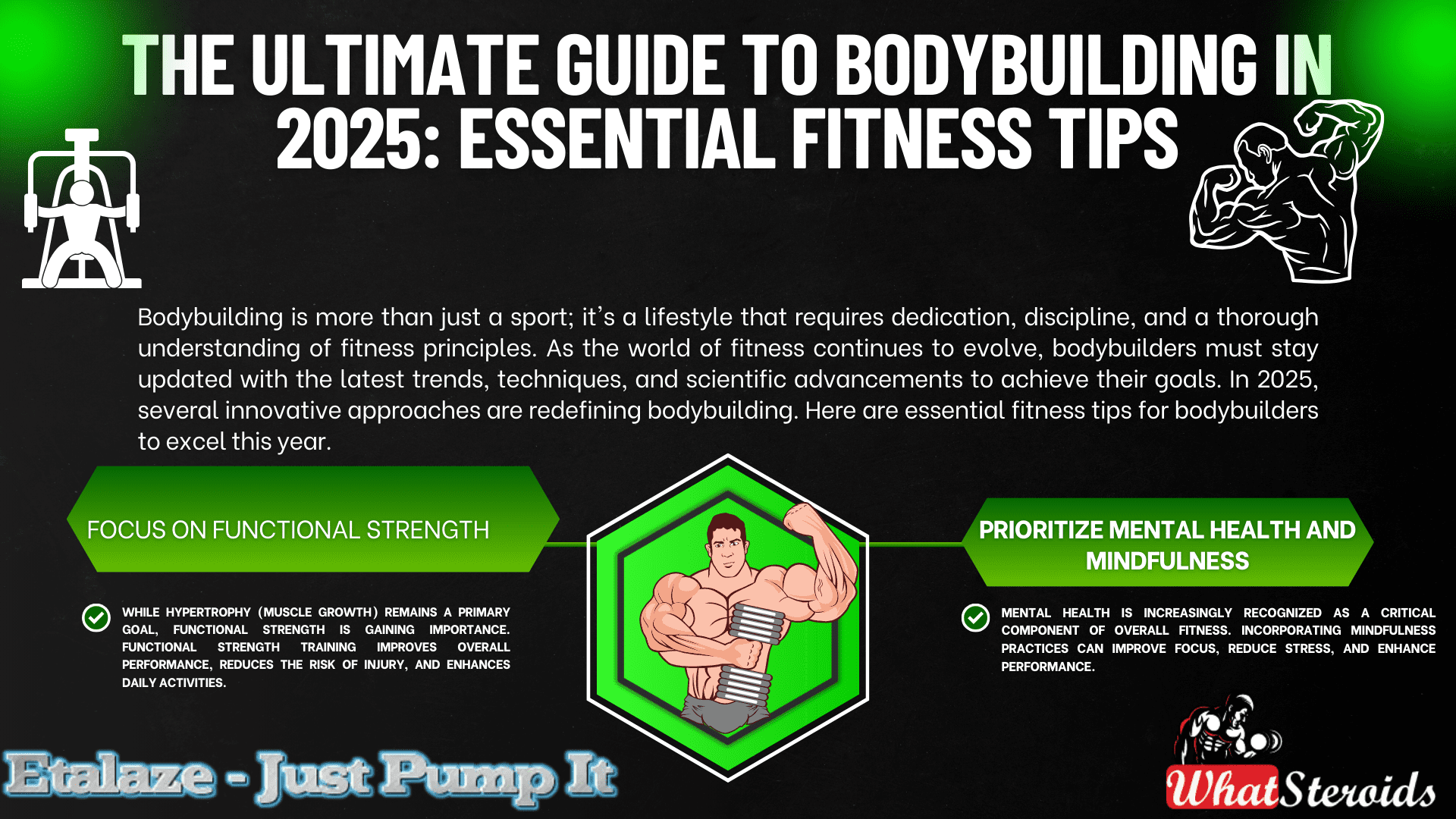
Bodybuilding is more than just a sport; it's a lifestyle that requires dedication, discipline, and a thorough understanding of fitness principles. As the world of fitness continues to evolve, bodybuilders must stay updated with the latest trends, techniques, and scientific advancements to achieve their goals. In 2025, several innovative approaches are redefining bodybuilding. Here are essential fitness tips for bodybuilders to excel this year.
Read More: Bodybuilder Winter Clothing: Staying Warm and Stylish
Embrace Technology-Driven Workouts
In 2025, technology plays a significant role in bodybuilding. Wearable devices, fitness apps, and virtual reality (VR) training are now integral components of an effective workout regimen.
Wearable Devices
Modern wearables track everything from heart rate and sleep patterns to muscle activation and caloric expenditure. Utilize these devices to monitor your progress and make data-driven adjustments to your training and nutrition plans.
Fitness Apps
Leverage fitness apps for customized workout plans, progress tracking, and virtual coaching. Many apps now incorporate artificial intelligence to provide personalized feedback and recommendations.
Virtual Reality Training
VR technology offers immersive workout experiences, allowing bodybuilders to simulate different training environments and scenarios. This can enhance motivation and add variety to your routine.
Focus on Functional Strength
While hypertrophy (muscle growth) remains a primary goal, functional strength is gaining importance. Functional strength training improves overall performance, reduces the risk of injury, and enhances daily activities.
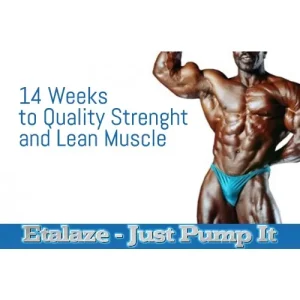 Check Out Our1 4 Weeks Quality Strength & Lean Muscles
Check Out Our1 4 Weeks Quality Strength & Lean Muscles
Compound Movements
Incorporate compound exercises like squats, deadlifts, and bench presses. These movements engage multiple muscle groups and joints, promoting balanced strength development.
Core Stability
Prioritize exercises that strengthen the core, such as planks, Russian twists, and leg raises. A strong core supports better lifting mechanics and reduces the risk of lower back injuries.
Optimize Nutrition for Muscle Growth and Recovery
Nutrition is the cornerstone of successful bodybuilding. In 2025, the focus is on personalized nutrition plans tailored to individual needs and goals.
Protein Intake
Ensure adequate protein intake to support muscle repair and growth. Aim for 1.6 to 2.2 grams of protein per kilogram of body weight per day, depending on your training intensity and goals.
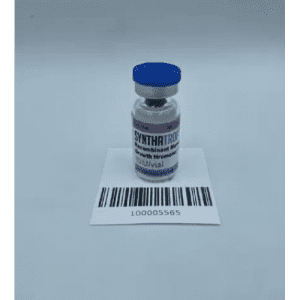 Click Here to Buy SynthaTrope By SynthaPharma
Click Here to Buy SynthaTrope By SynthaPharma
Nutrient Timing
Pay attention to nutrient timing to maximize muscle recovery and growth. Consume protein and carbohydrates within 30 minutes post-workout to replenish glycogen stores and kickstart muscle repair.
Supplements
Utilize supplements wisely. Creatine, branched-chain amino acids (BCAAs), and omega-3 fatty acids are popular choices for enhancing performance and recovery.
Prioritize Mental Health and Mindfulness
Mental health is increasingly recognized as a critical component of overall fitness. Incorporating mindfulness practices can improve focus, reduce stress, and enhance performance.
Meditation
Incorporate meditation into your daily routine to reduce stress and improve mental clarity. Mindfulness meditation can enhance your mind-muscle connection during workouts.
Visualization
Use visualization techniques to mentally rehearse your workouts. Visualizing successful lifts and achieving your goals can boost confidence and motivation.
Rest and Recovery
Prioritize rest and recovery to prevent burnout and overtraining. Ensure you get 7-9 hours of sleep per night and incorporate rest days into your training schedule.
Leverage Advanced Training Techniques
Advanced training techniques can help break through plateaus and stimulate muscle growth. In 2025, several methods are gaining popularity among bodybuilders.
Blood Flow Restriction (BFR) Training: BFR involves restricting blood flow to the muscles during low-intensity exercises. This technique can enhance muscle growth and strength without the need for heavy weights.
Eccentric Training: Focus on the eccentric (lowering) phase of exercises. Eccentric training can stimulate greater muscle damage and growth compared to traditional concentric movements.
Periodization: Implement periodization into your training plan. Varying the intensity, volume, and type of exercises can prevent plateaus and ensure continuous progress.
Incorporate Recovery and Mobility Work
Recovery and mobility are essential for preventing injuries and maintaining optimal performance. In 2025, bodybuilders are paying more attention to these aspects of training.
Foam Rolling and Myofascial Release: Use foam rollers and massage balls to release muscle tightness and improve flexibility. Regular myofascial release can reduce soreness and enhance recovery.
Stretching: Incorporate dynamic stretching before workouts and static stretching after workouts. Stretching improves range of motion and prevents muscle imbalances.
Cryotherapy and Hydrotherapy: Explore recovery techniques like cryotherapy (cold therapy) and hydrotherapy (water therapy) to reduce inflammation and accelerate muscle recovery.
Engage in Continuous Learning and Community Building
The fitness industry is constantly evolving, and staying informed is crucial for success. Engage in continuous learning and connect with the bodybuilding community for support and motivation.
Educational Resources: Read books, watch videos, and attend seminars to stay updated on the latest research and trends in bodybuilding.
Community Engagement: Join online forums, social media groups, and local bodybuilding clubs. Sharing experiences and knowledge with fellow bodybuilders can provide valuable insights and encouragement.
Professional Guidance: Consider working with a certified personal trainer or coach. Professional guidance can help you optimize your training and nutrition plans, ensuring you're on the right track.
With your FB Plus subscription or active FB Plus Pass, you now have access to 124 weeks of our most popular workout programs, which typically sell for $10-$30 each. Additionally, our popular 4-week Meal Plan is included. This is on top of the 38 Challenges and Programs that are already available to Plus members.
We've also introduced a new feature that many of you have requested. To assist you in choosing your next program, you can now preview each day of any program from its detail view. This feature lets you see all the included workout videos and content before you schedule it, ensuring you know exactly what to expect.
Conclusion
In 2025, bodybuilding is more than just lifting weights; it's a holistic approach to fitness that encompasses technology, nutrition, mental health, and advanced training techniques. By embracing these fitness tips, bodybuilders can achieve their goals, stay injury-free, and enjoy a fulfilling fitness journey. Remember, consistency and dedication are key to success in bodybuilding. Stay committed, keep learning, and most importantly, have fun on your path to becoming the best version of yourself.
Bodybuilding
Top Video Games for Bodybuilders in 2025
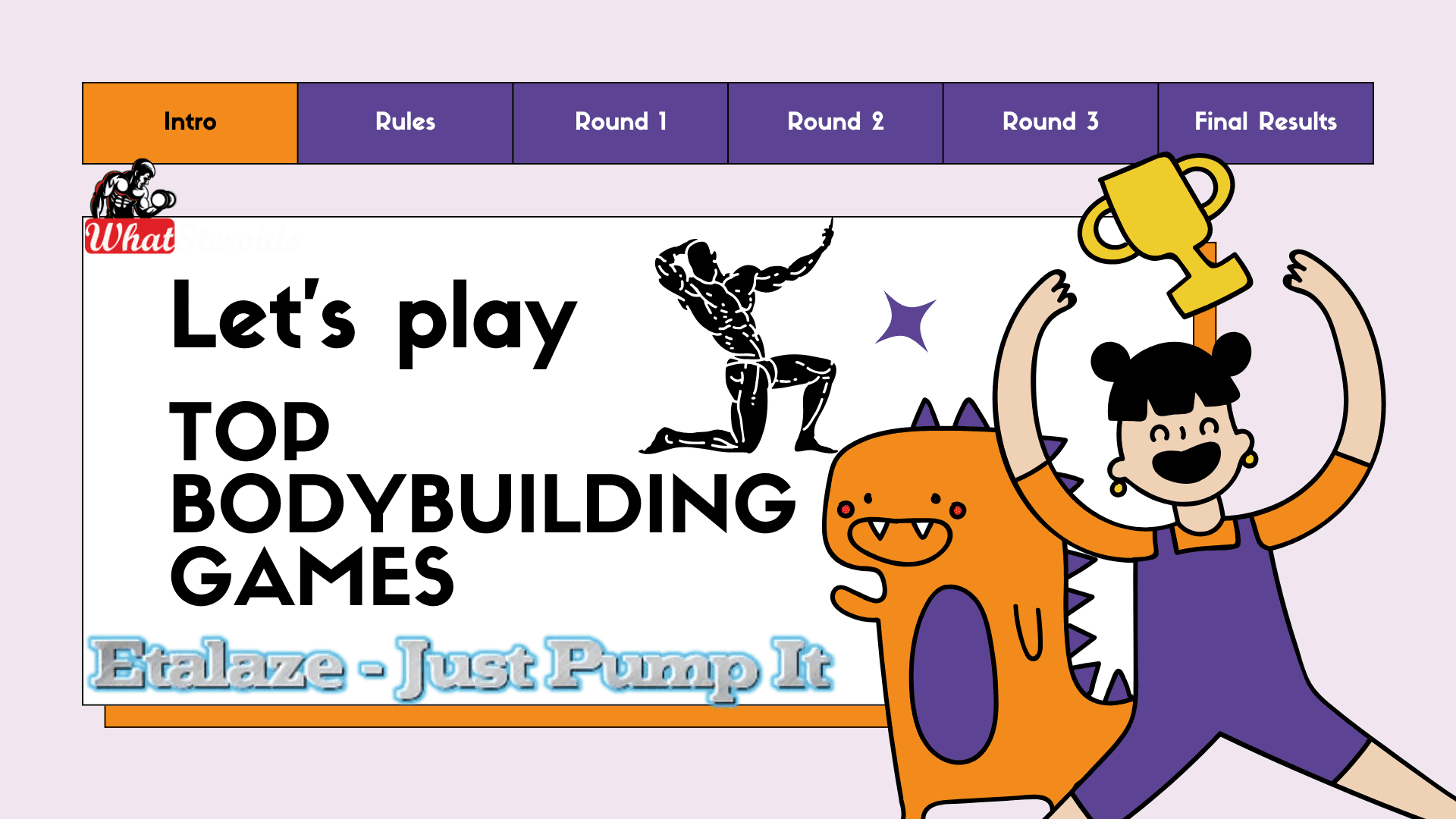
There are several video games that can be great for bodybuilders, combining fitness and fun! Here are some of the best options:
Ring Fit Adventure (Nintendo Switch)
The game uses the Ring-Con and Leg Strap to guide you through various exercises and adventures. It's a fun way to get a full-body workout while playing a game.
Fitness Boxing 2: VR Boxing Remastered (PlayStation VR)
It offers a full-body boxing workout with a variety of punches and combos. It's a great way to improve your fitness while enjoying a virtual boxing experience.
Must Read: Marvel-Inspired Training Clothing on Amazon
Just Dance 2024
This popular dance game gets you moving to the beat with a variety of songs and dance routines. It's a fun way to burn calories and improve your coordination.
Zumba Fitness
Burn It Off (Nintendo Wii): This game offers a fun and energetic Zumba workout, perfect for those who enjoy dancing and want to get a good cardio workout.
Yoga for Beginners
If you're looking for a more relaxing workout, yoga games can help improve flexibility and reduce stress. Many of these games offer guided yoga sessions that you can follow along with.
Gym Tycoon
This game lets you build and manage your own gym, complete with various workout equipment and fitness classes. It's a great way to learn about different exercises and how to create effective workout routines.
The Sims 4: Fitness Stuff Pack
This expansion pack for The Sims 4 adds fitness equipment and activities to the game, allowing you to improve your character's fitness and join the athlete career.
Grand Theft Auto: San Andreas
While not a traditional fitness game, this classic game includes bodybuilding activities that can help your character gain muscle and improve fitness.
Knockout Home Fitness (Nintendo Switch)
This game offers a variety of boxing workouts that can help improve your strength and endurance.
Gym Simulator 24 (PC)
In this simulation game, you can build and manage your own fitness empire, creating workout routines and managing gym equipment.
Let's Get Fit (Nintendo Switch)
This game focuses on pure workouts, allowing you to set programs and follow along with digital trainers for a customized fitness experience.
Beat Saber (VR)
A popular VR game where you slash blocks to the beat of the music, providing an intense full-body workout.
Synth Riders (PlayStation VR)
This game combines freestyle dance and fitness, offering high-tempo tracks and multiplayer modes for a fun and energetic workout.
Yoga Master (PlayStation)
Designed by professional yoga coaches, this game offers a variety of yoga lessons and poses to improve flexibility and reduce stress.
Les Mills Bodycombat (PlayStation VR)
A martial arts-inspired workout game with a range of workout plans and coaching to keep you motivated.
OhShape Ultimate (PlayStation VR)
This game provides a full-body cardio workout with six sessions and two difficulty levels, designed to engage every part of your body.
These games offer a mix of cardio, strength, and flexibility workouts, making them great additions to your fitness routine.
Related Article: Supplemental Breast Milk for Bodybuilders
-

 Steroids2 years ago
Steroids2 years agoShavers and Other Body Grooming Equipment for Bodybuilders In 2023
-

 Steroids2 years ago
Steroids2 years agoChatGPT and Other Avenues to Find Great Bodybuilding Coaches
-

 Steroids2 years ago
Steroids2 years agoBest Oil Recommendations Before Competition for Subtle Shimmer
-

 Steroids2 years ago
Steroids2 years agoPowerlifting Vs Power Building: Find Out the Big Difference and When to Shift Between the Two
-

 Nutrition1 year ago
Nutrition1 year agoEverything Nutritional Food: What’s Too Much Or Too Little
-

 Bodybuilding Products1 year ago
Bodybuilding Products1 year agoTelmisartan In Bodybuilding: An Expert’s Advice
-

 Anabolic Steroids1 year ago
Anabolic Steroids1 year agoLegality of Anabolic Steroids In Latin America
-

 Beginners2 years ago
Beginners2 years agoTren Cycle for Beginners
-

 Bodybuilding1 year ago
Bodybuilding1 year agoList of FDA-Approved Peptides
-

 Bodybuilding2 years ago
Bodybuilding2 years agoCompetition Prep Cycle for Pro Bodybuilders
-

 Bodybuilding1 year ago
Bodybuilding1 year agoChia Seeds in A Bodybuilder’s Diet: An Expert’s Advice
-
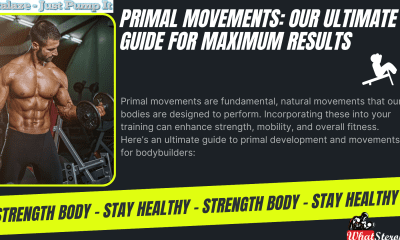
 Bodybuilding8 months ago
Bodybuilding8 months agoPrimal Movements: Our Ultimate Guide for Maximum Results
-
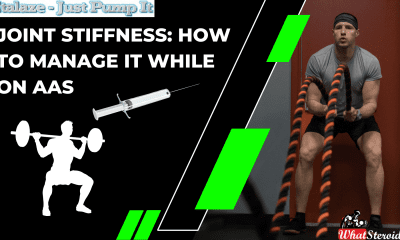
 Anabolic Steroids9 months ago
Anabolic Steroids9 months agoJoint Stiffness: How to Manage It While on AAS
-
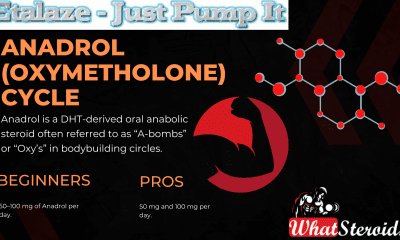
 Steroids12 months ago
Steroids12 months agoAnadrol Cycle: Benefits, Doses, Alternatives, etc.
-
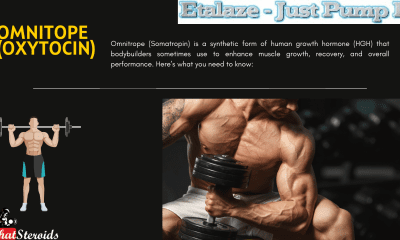
 Steroids10 months ago
Steroids10 months agoOmnitope (Oxytocin)
-
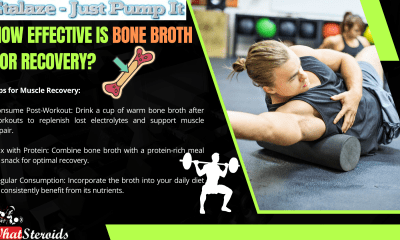
 Bodybuilding8 months ago
Bodybuilding8 months agoHow Effective is Bone Broth for Recovery?
-

 Bodybuilding1 year ago
Bodybuilding1 year agoHow Much Is Too Much Cardio? Understanding Heart Rate Zones
-
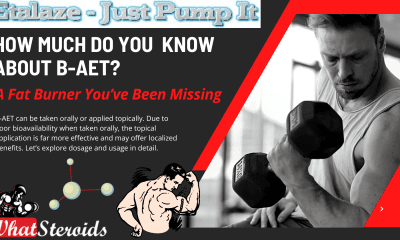
 Anabolic Steroids11 months ago
Anabolic Steroids11 months agoHow Much Do You Know About B-AET? A Fat Burner You’ve Been Missing
-
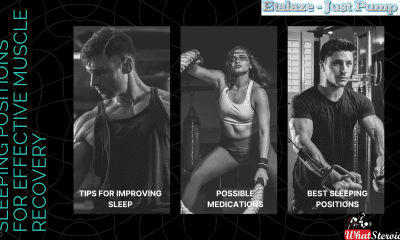
 Steroids9 months ago
Steroids9 months agoSleeping Positions for Effective Muscle Recovery
-

 Bodybuilding1 year ago
Bodybuilding1 year agoCalorie Dumping: A Bodybuilder’s Guide
-

 Product Reviews11 months ago
Product Reviews11 months agoTop Vitamins for Skin Health
-
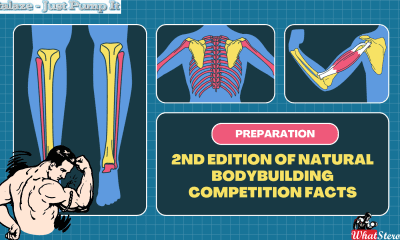
 Bodybuilding7 months ago
Bodybuilding7 months ago2nd Edition of Natural Bodybuilding Competition Facts
-
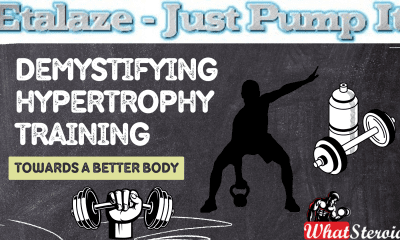
 Bodybuilding1 year ago
Bodybuilding1 year agoDemystifying Hypertrophy Training
-
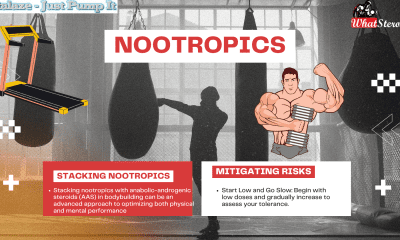
 Bodybuilding8 months ago
Bodybuilding8 months agoAre Nootropics a Better Option to AAS?
-
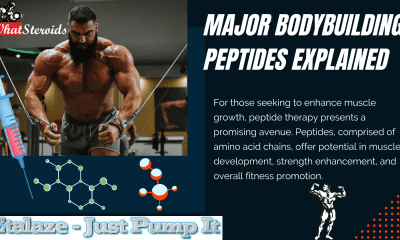
 Steroids11 months ago
Steroids11 months agoMajor Bodybuilding Peptides Explained


